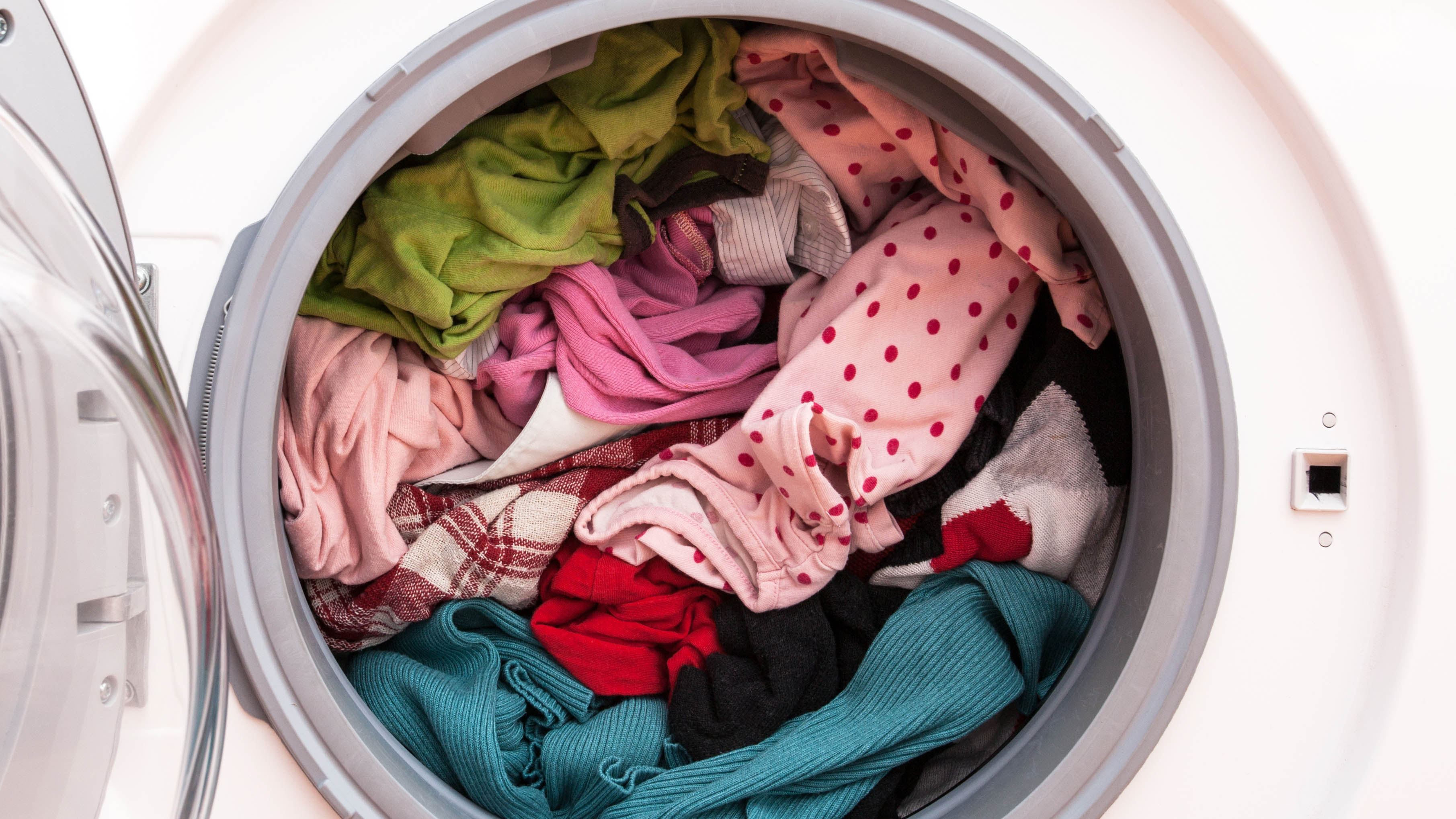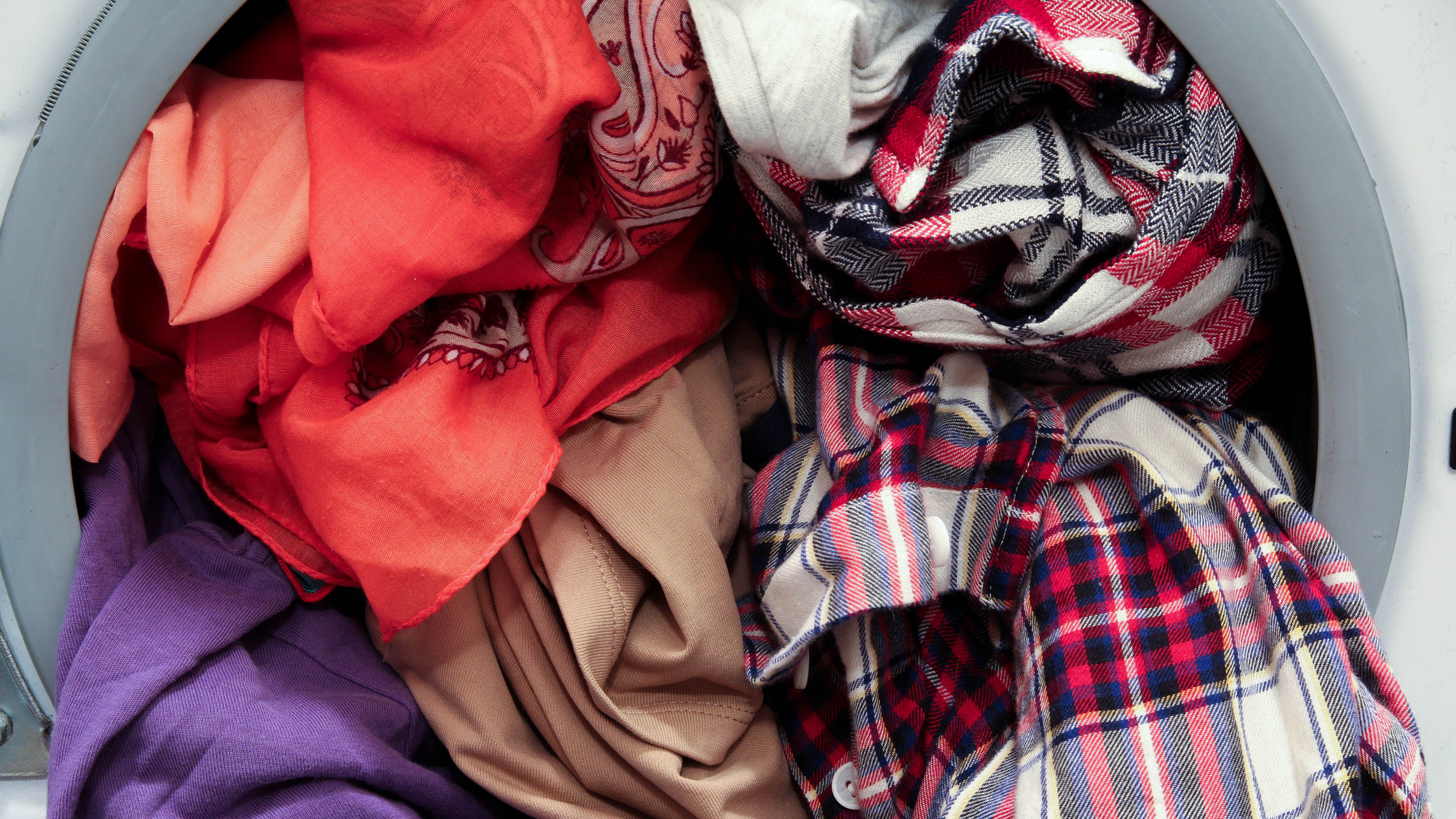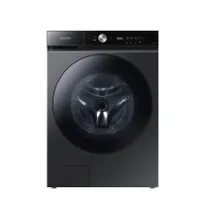How Much Laundry Can You Fit Into a Full Load and Still Get Your Items Clean?

I’ve you’re anything like I used to be, you probably cram laundry into your washing machine like it’s a never-ending hole. Sheets, pillowcases, clothing, and towels… and there’s just enough space for one more item.
However, although we assume that putting the washing machine on less frequently will save energy and give us back more time, it’s not necessarily the case.
Overloading your washing machine is one of the most common washing machine mistakes you can make. It will not only lead to poorly washed clothes, but it will put a strain on your appliance, with the knock-on issue of having to spend out on costly repairs or even a full replacement.
Once you’ve invested in one of the best washing machines, and I strongly advise buying the best you can afford, especially if it has to bear the rigors of family life, you’re going to want to ensure it fulfills its potential. However, to keep it working to its optimal capability, you’ll need to know how to use it correctly. And that also include knowing how much laundry detergent to use for the best wash.
Why you should avoid overloading your washing machine

One of the biggest pitfalls when overloading a washing machine is thinking that it will reduce the number of times that the appliance needs to run. But when a washing machine is stuffed full of clothes, it doesn't work efficiently.
“When you cram too many clothes into the drum, it prevents them from moving freely, leading to poor washing results, increased wear and tear, and those dreaded error messages,” says AAA Appliance Service Center.
There simply isn’t enough space for the water and detergent to disperse. When it comes to the spin cycle, the machine is put under extra strain, and you might even end up with a shaky washing machine that needs fixing.
How to tell when your washing machine is overloaded
Some signs that your washing machine is overloaded are easier to spot than others, such as being unable to close the door without an extra shove. AAA Appliance Service Center also warns that you might notice the drum doesn’t turn easily, and your clothes aren’t getting as clean, with soap remaining at the end of the cycle. You might also hear unusual noises or vibrations as the appliance struggles with an unbalanced load, especially during the spin cycle.
Get instant access to breaking news, the hottest reviews, great deals and helpful tips.
So, what is the ideal amount of laundry to add to a washing machine? Unfortunately, there’s no one-size-fits-all scenario; it all depends on the individual capacity of your machine.
Know your washer's capacity and stick to it

Whether you have a front loader or a top loader, your washing machine will come with guidelines for the maximum load it can handle.
Before using your washing machine, it's helpful to know its capacity, which is something you should always check before making a purchase. Maytag says that a standard washing machine ranges from 3.5-5 cubic feet and can handle at least 12 pounds of laundry. This means that regular, half, and extra-large loads will not be the same weight per washer, as each appliance’s laundry capacity will depend on its own dimensions.
As a guide, the largest capacity washing machine in our washing machine buying guide is the Samsung WF53BB8700AV, which has a 5.3 cu. ft. capacity. The Whirlpool WTW8127LC comes in a close second at 5.2 cu. ft. You might also be interested in reading I'm a mom who's washed a lot of dirty clothes over the years — these are the 5 things I look for when buying a washing machine, and the experts agree.
This ultra-smart and well-priced washer is stacked with smart features without being tricky to use, which is why it takes the top spot in our washing machine guide. Apart from looking sleek, it has a generous 5.3 cu. ft. capacity, an automatic detergent dispenser and is quiet to run.
How to calculate the capacity of your washing machine
If you’ve misplaced your washing machine’s user guide and don’t know the capacity of your appliance, you can calculate how much laundry your washing machine can handle, using Maytag’s formula.
Volume in cubic feet = (r2)*(Pi)*(D)
It’s been a long time since I was in a math class, so here’s that broken down into a simpler form.
r (radius) = the distance from the center point of the drum to the edge, squared (multiplied by itself)
Pi = 3.14
D (depth) = height of the cylinder
Alternatively, only fill your washing machine drum to the ⅔ line, which should leave about six inches of space between your wash load and the top of the drum. This space should ensure your laundry, water, and detergent have enough room to move around during the cycle, and that once complete, your clothes are clean and your washing machine hasn’t been put under undue strain. That sounds like a good wash day to me!
You might also be interested in washing machine experts warn against making this cleaning mistake with vinegar, and what to do instead.
Follow Tom's Guide on Google News to get our up-to-date news, how-tos, and reviews in your feeds. Make sure to click the Follow button.
More from Tom's Guide
- You could be ruining your washing machine without knowing it — try these 3 cheap hacks to extend its life
- This one item is your secret weapon against washing machine mold — and it's not vinegar or baking soda
- 7 laundry myths debunked by the experts

Camilla is the Homes Staff Writer and covers everything to do with homes and gardens. She has a wealth of editorial experience, mounting over 30 years, and covers news and features, tests products for reviews and compiles buying guides.
Her work has appeared in business and consumer titles, including Ideal Home, Real Homes, House Beautiful, Homebuilding & Renovation, and Kitchen & Bathroom Business. She’s even appeared on the cover of Your Home, writing about her own house renovation.
Although she’s obsessed with decorating her home, she also enjoys baking and trying out the latest kitchen appliances. But when she’s not inside, you’ll find her pottering about in her yard, tending to her vegetable patch or taking in her prized hydrangeas.
You must confirm your public display name before commenting
Please logout and then login again, you will then be prompted to enter your display name.

